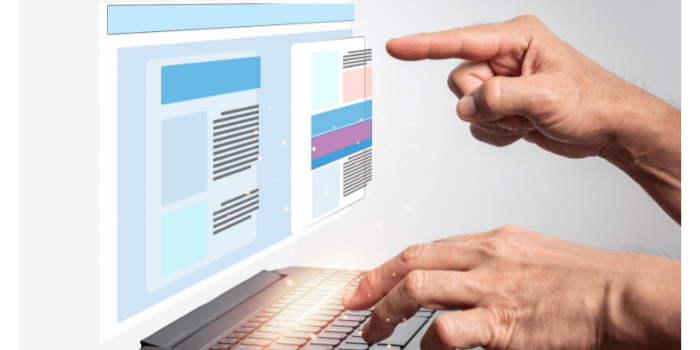Digital banking disruption is more than a guarantee; it is actively shaping the way that banks are performing services in real-time. You need to understand the trends shaping the financial services industry to survive. That means knowing the technology in progress and which banks are using them. Such technology includes cryptocurrency and intelligent automation.
Digital Disruption In The Financial Sector
Gartner has reported that a good number of banks are behind the times. They have to hurry since a few tech giants also want to enter the fray. Banking Dive reports that Google plans to launch checking accounts in 2020, in partnership with Citigroup and the Stanford Federal Credit Union. Amazon and Apple are also entertaining the fray. You need to hurry to gain a competitive advantage, by eyeing other digital trends and how they will affect future banking.
Technology is rapidly changing how we conduct banking and transactions. With smartphones and Apple Pay, for example, there is a lesser need for cash or checks. The Real-Time Payments Innovation Playbook reports that 55 percent of business professionals have real-time payments as a top priority within B2B. This means not sticking with the traditional credit card or loan payment.
5 Disruptive Digital Trends In Banking
1. AI and Machine Learning
Artificial intelligence is being used to interact with bank customers and internal users. We see them operate in real-time, and constantly learn. One benefit of AIs is that they won’t just manage your processes but also refine them. AI is currently being trained to avoid biases that would otherwise plague human operators.
Machine learning is using an algorithm to identify patterns in transactions and processes, gleaning analysis from statistics. They use the data to create customer profiles and make predictions. One benefit of machine learning is that it can identify illegal transactions or cases of fraud, which increases safety for the bank in question.
2. Digital Process Automation
Digital Process Automation, also known as DPA, is one of the best trends that you can implement into your banking business. It is digitizing all of your processes, connecting them, and putting them under one umbrella. You have software that doesn’t just store or transfer your data but also manages it in real-time. That means less human input is required, which saves on time.
DPA strives to get rid of the busywork that plagues a workday. Consider how much paperwork is involved, for example, when applying for a bank account or a credit card. If too many people apply in one setting, then it slows down the internal users reading them. The same happens when banks are hiring; Human Resources needs to review the applicants’ records, which can include piles of paperwork. Other operations can include email threads, spreadsheets, and time-consuming phone calls. A whole workday can be wasted while reading on these minute details.
3. Blockchain & Cryptocurrencies
Blockchain technology is designed to authenticate and verify data. It is a form of encryption by which two or more parties can interact and exchange goods or services, without compromising security.
Cryptocurrencies provide an alternative to using traditional currencies such as dollars, Euros, or even yen. Gartner estimates that 50 percent of smartphone users lacking a bank account will “have mobile-accessible cryptocurrency”. This increases the convenience and potential for these currencies. It’s still a work-in-progress because of too much human involvement but shows promise.
Blockchain and cryptocurrencies go hand in hand to create a secure, decentralized source of money. The former ensures that no individual can compromise or disrupt cryptocurrency from a distance, reducing the amount of fraud. Cryptocurrency, in turn, allows for important information and valuable items to be sent.
4. “Fintech” & Financial Industry Digital Disruptors (Credit Karma, Coinbase, Venmo, etc.)
Many financial tech institutions, also known as Fintechs, are making waves through the various sectors. They end up simplifying the payment process and bypassing tedious traditions. Some are eschewing traditional banking methods such as cash and focusing on mobile solutions.
Venmo is a cashless paying app that is connected to your bank account. You can use it to pay businesses and people by email. It also uses your list of contacts on a smartphone to find out who may request or send money to you. While the app does not currently work outside the United States and requires a US bank account for setting up on a phone, the company is working to develop international alternatives.
A relatively new Fintech field is TradeTech. This refers to using information technology to conduct cross-border transactions. It reduces the amount of time invested in such financial communications and encourages transparency. TradeTech also reduces the burden of stress on supply chains by conveying which products and raw materials are available so that investors can make an informed decision.
5. Chatbots and Voice Interface
Chatbots are one of the fastest-growing trends within the industry. They are programs that can interact with people in real-time on a computer. While they are mainly used for customer service, chatbots can also provide important metrics to internal users, deliver announcements via Slack or other systems, and answer relevant questions.
According to Chatbots Life, “the global chatbot market will reach 1.25 billion by 2025.” Its primary use is customer service, but the potential is gradually expanding. Accenture Digital says that 56% of the executives they interviewed said that chatbots are causing disruption while increasing communication and productivity. 54% of the executives say that customer acquisition has improved, returning more value to the employers.
Voice recognition is a convenient and sometimes necessary technology. PWC conducted a survey and found that 90% of surveyed users were familiar with voice recognition. 72% of them has used the tool on their smartphones, laptops, tablets, wearable devices, speakers, and desktops. Current barriers include the device limitations — from answering questions to ensuring privacy– as well as the prices. Time will increase developments and reduce costs, ideally.
In line with recognition, voice interface is spoken interaction with computers, which are designed to recognize verbal commands. Some are used in smart devices, such as phones and home virtual assistants. Others are used to answer questions on the phone and reduce confusion. You may hear voice interfaces on automated systems.
One benefit of chatbots and voice interfaces is that they can address customer concerns rapidly. Banks in a time of crisis can easily run out of customer service reps when multiple people call, leading to longer wait times. This frustrates individuals, who may want answers to simple questions. It can also frustrate internal users that want a simple process. But you can get the answers easily with this technology. You simply have to ask.
How Can Banks and Financial Institutions Keep Up?
Step up your IT investments and find automation leaders. Deloitte has concluded that by 2022, American banks will spend half of their budget on new technology, going from 40% to 48%. Current legacy systems, however, are preventing them from earning a higher return on their assets. Thus, managers need to take charge. You can either hire people that can usher in a technology revolution or train your leaders to follow that example.
Second, assess your individual business needs and which software can solve existing problems. Bluntly selecting an automation tool is a waste of time and resources. Choose specific DPA software that can help your existing systems communicate with each other while dismantling legacy structures.
Third, have constant insights to track your Return on Investment (ROI). There are a great of these technologies and transitions causing you to go over budget. As long as you specify your goals, you can avoid this problem. Keep an eye on the size of your investment and measure its tangible impact in the long run. Know what numbers you need to watch, to reduce risk and increase returns.
Jump Ahead Of Traditional Banks With Virtus Flow Automation
Virtus Flow wants to ensure that your financial institution is ready for the twenty-first century. Our Digital Workflows will ensure that you will eliminate the need for spreadsheets and other tedious paperwork and repetitive processes. Abandon spreadsheets and emails to hasten your processes.
Schedule your free demo with us today. Virtus Flow will automate your systems, to ensure that you are not left behind.




